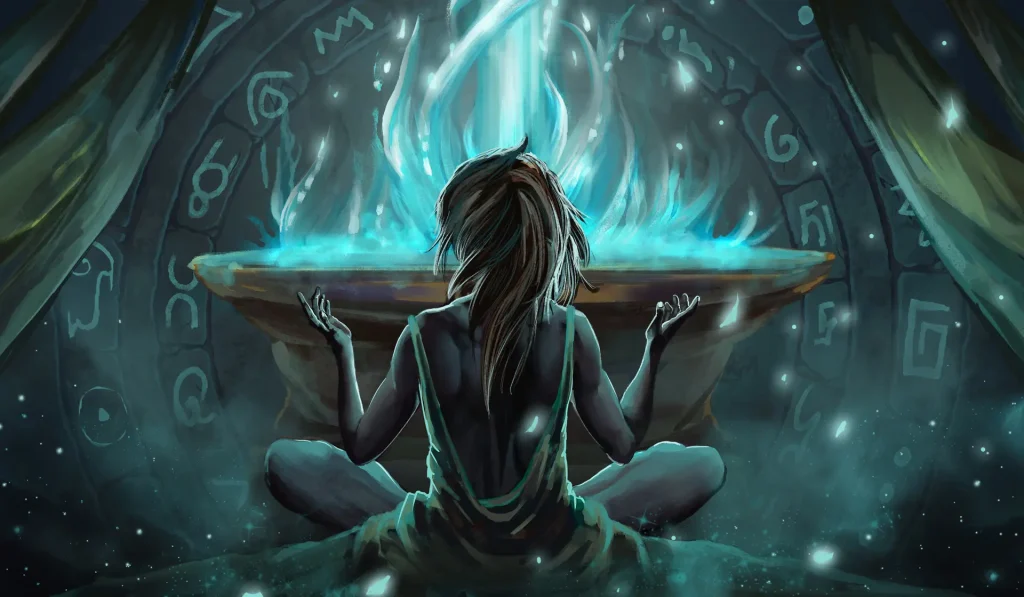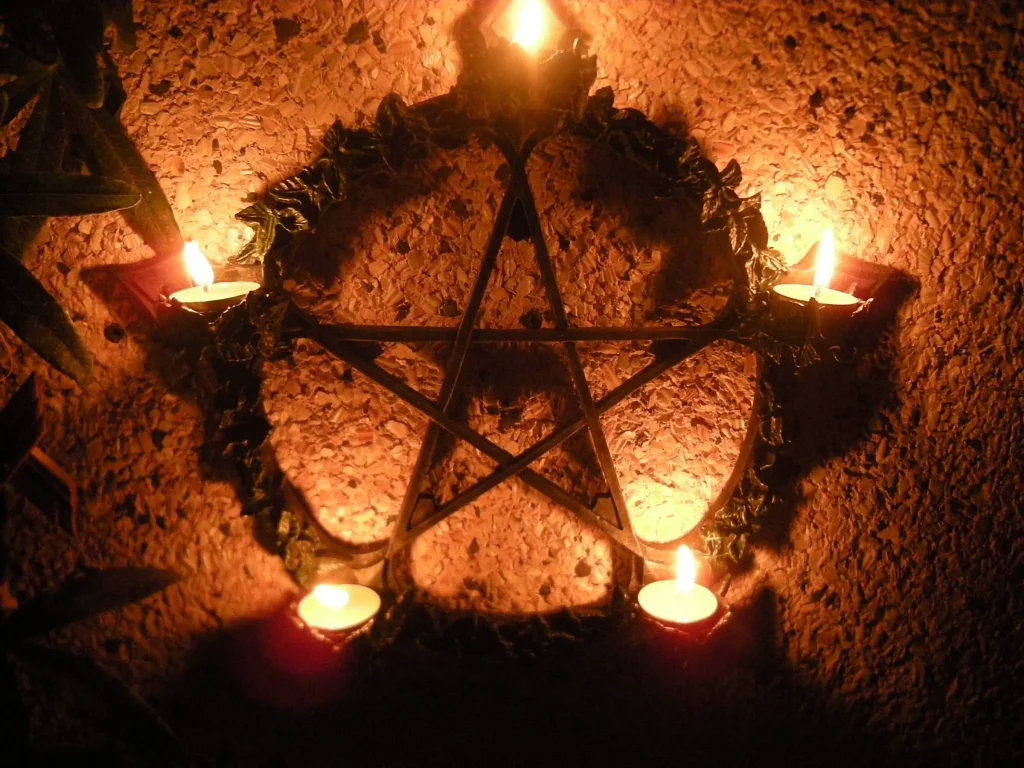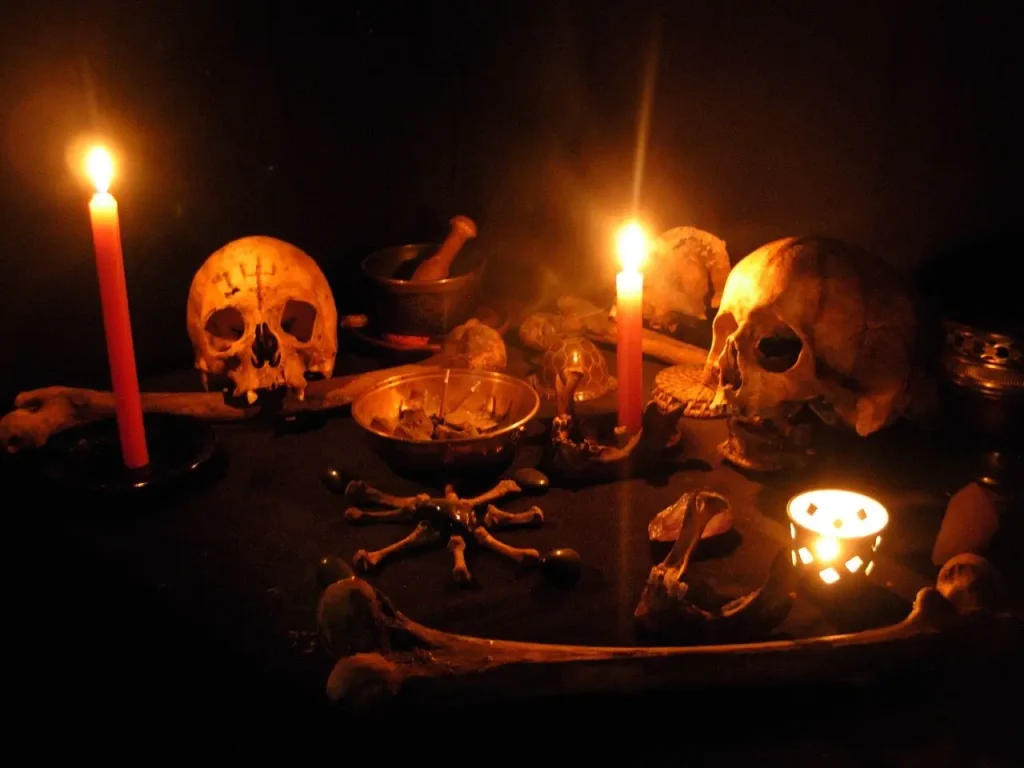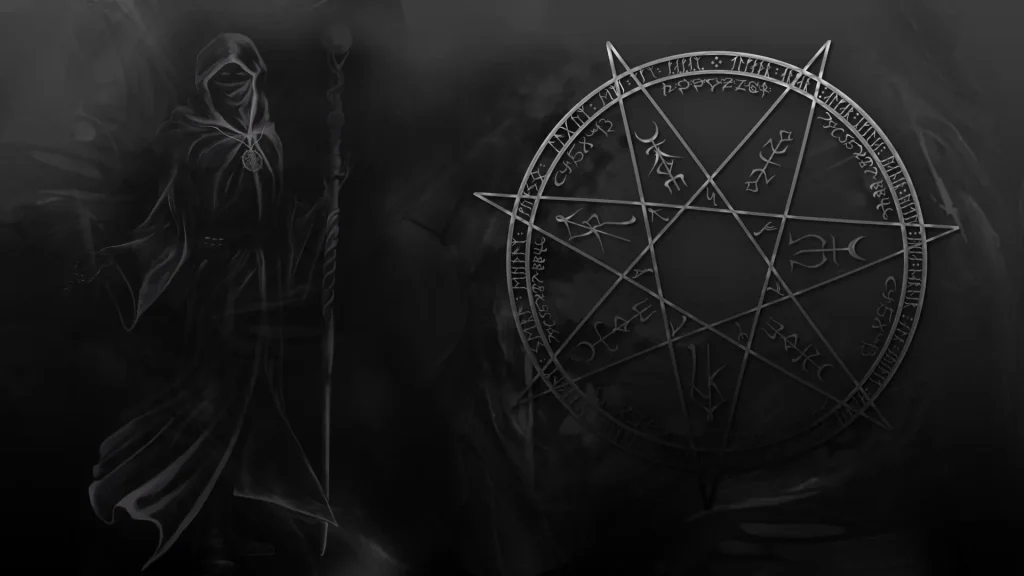Dark witchcraft, often shrouded in mystery and misunderstood, has captivated the human imagination for centuries. The term “dark witchcraft” refers to the practice of magic and witchcraft that delves into the realms of shadow, the occult, and the exploration of the darker aspects of the human psyche. In this article, we will delve into the intriguing world of dark witchcraft, exploring its history, practices, and the misconceptions that surround it.
Defining Dark Witchcraft
Defining dark witchcraft requires a nuanced understanding of its various aspects and practices. Contrary to popular misconceptions, dark witchcraft is not inherently malevolent. Instead, it involves exploring the hidden recesses of the human psyche, confronting one’s fears, and delving into the mysteries of existence. Here are some key points to consider when defining dark witchcraft:
1. The Shadow Self:
Central to dark witchcraft is the concept of the shadow self, a term coined by Swiss psychiatrist Carl Jung. The shadow self represents the unconscious and often repressed aspects of an individual’s personality. Dark witches work with their shadow selves, embracing traits such as anger, jealousy, and fear, in an effort to achieve self-awareness and inner balance. By acknowledging and integrating these aspects, practitioners aim for personal transformation and spiritual enlightenment.
2. Taboo and Controversial Practices:
Dark witchcraft may involve practices that are considered taboo or controversial in mainstream society. This could include exploring themes related to death, necromancy (communication with the deceased), or cursing. However, it is important to note that not all practitioners engage in these practices, and many focus on inner transformation rather than external manipulation.
3. Balance and Duality:
Dark witchcraft emphasizes the balance between light and dark, good and evil, creation and destruction. Just as night is an inherent part of the day, darkness is an integral aspect of existence. Dark witches recognize the importance of this duality and seek harmony between opposing forces. For them, embracing the dark aspects of life is essential for holistic spiritual growth.
4. Magical Practices:
Dark witchcraft involves a wide range of magical practices, including rituals, spells, divination, and meditation. These practices are often deeply symbolic and may involve the use of various tools, such as candles, crystals, witch herbs, and incense. The intention behind these rituals can vary widely, from self-discovery and healing to protection and personal empowerment.
5. Connection with Nature:
Many practitioners of dark witchcraft have a deep reverence for nature and its cycles. They may incorporate nature-based rituals and seasonal celebrations into their practices. This connection with the natural world serves as a source of inspiration and spiritual insight, aligning practitioners with the rhythms of the Earth.
6. Individuality and Personal Path:
Dark witchcraft is highly individualistic, allowing practitioners the freedom to explore their own unique paths. There is no strict dogma or centralized authority governing these practices. Instead, individuals are encouraged to study, learn, and adapt their craft according to their personal beliefs and experiences.


In summary, defining dark witchcraft involves understanding its focus on self-exploration, the integration of the shadow self, the balance between light and dark forces, and the diverse range of magical practices employed by its practitioners. While it may challenge societal norms, dark witchcraft offers a profound and transformative spiritual journey for those who are drawn to its mysteries.
Origins and History
The origins and history of dark witchcraft are deeply intertwined with the broader history of witchcraft and occult practices. Throughout centuries, various cultures across the world have had their unique traditions of magic, often including elements that might be categorized as dark witchcraft in contemporary terms.
- Ancient Civilizations: Dark witchcraft, like other forms of magic, has roots in ancient civilizations. Practices involving the invocation of spirits, divination, and herbalism were common in cultures such as Mesopotamia, Egypt, Greece, and Rome. These practices were considered both sacred and mystical and were often conducted by priests, priestesses, and shamans.
- Middle Ages and Witch Hunts: The Middle Ages saw a significant shift in the perception of witchcraft. With the rise of Christianity in Europe, pagan practices and folk magic came to be viewed with suspicion. The Church condemned any form of magic that was not sanctioned by religious authorities. During this time, the infamous witch hunts occurred, leading to the persecution and execution of countless individuals accused of witchcraft. Both benign and malevolent forms of magic were targeted, contributing to the secretive nature of magical practices, including dark witchcraft.
- Renaissance and Occult Revival: The Renaissance period (14th to 17th centuries) witnessed a revival of interest in classical knowledge and occult practices. Scholars and magicians explored ancient texts on alchemy, astrology, and mystical traditions. This era saw the emergence of grimoires, books containing magical spells and rituals, some of which included dark or forbidden practices. Prominent figures like John Dee and Aleister Crowley delved into arcane knowledge, influencing later occult movements.
- Modern Witchcraft Revival: The 20th century witnessed a resurgence of interest in witchcraft and the occult, spurred by movements such as Wicca. Modern witchcraft, often referred to as neopaganism or contemporary witchcraft, embraces both light and dark aspects. Some practitioners, particularly those on the left-hand path, actively explore dark and taboo elements, drawing inspiration from historical witchcraft practices and various occult traditions.
- Cultural and Regional Variations: It’s essential to recognize that different cultures and regions have their unique traditions of dark magic and witchcraft. Practices vary widely across the world, from African and Caribbean traditions like Hoodoo and Voodoo to South Asian practices like Tantra. Each of these traditions has its distinct rituals, beliefs, and magical techniques, contributing to the diverse tapestry of dark witchcraft.
In contemporary times, dark witchcraft continues to evolve, influenced by various cultural, historical, and spiritual factors. Practitioners often draw from ancient traditions, adapting and integrating them into their personal practices. The modern understanding of dark witchcraft emphasizes self-exploration, personal empowerment, and the responsible use of magical knowledge, allowing individuals to engage with the shadows in ways that align with their beliefs and ethical principles.
Practices and Rituals
Practices and rituals in dark witchcraft are deeply rooted in symbolism, intention, and personal transformation. They encompass a wide array of activities, from spellcasting and divination to meditation and energy work. It’s important to note that the specific practices and rituals can vary widely among individuals and traditions within the broader umbrella of dark witchcraft. Here are some common aspects of practices and rituals in dark witchcraft:
- Spellcasting: Spellcasting is a fundamental practice in dark witchcraft. Spells involve the use of rituals, chants, witch symbols, and sometimes tools to focus and amplify the practitioner’s intention. Dark witches may cast spells for various purposes, such as self-empowerment, protection, banishing negativity, or personal transformation. These spells often involve candles, herbs, dark crystals, and other ritual objects, even some witch symbols, each chosen for its specific magical properties.
- Rituals and Ceremonies: Dark witchcraft rituals are elaborate ceremonies designed to create a sacred space and connect with spiritual energies. Rituals often involve the invocation of deities, spirits, or elemental forces, depending on the practitioner’s belief system. These ceremonies may be conducted during specific lunar phases, seasonal events, or personal milestones. Rituals can include meditation, visualization, and the recitation of incantations to invoke the desired energies.
- Divination: Divination is the practice of seeking insights or answers through various methods, such as tarot cards, runes, scrying (gazing into a reflective surface), or pendulums. Dark witches often use divination as a tool for self-reflection, guidance, and understanding their path. It can also be employed to explore the shadow self and gain insight into hidden aspects of the psyche.
- Meditation and Visualization: Meditation and visualization play a crucial role in dark witchcraft. Through meditation, practitioners enter altered states of consciousness, enabling them to explore their inner worlds, confront fears, and connect with spiritual energies. Visualization techniques allow witches to create mental images that represent their desires or intentions, enhancing the focus and energy of their spells and rituals.
- Energy Work and Psychic Abilities: Dark witches frequently work with energy, manipulating it for various purposes. This can include practices like energy healing, aura cleansing, or psychic shielding. Developing psychic abilities, such as clairvoyance, clairaudience, and intuition, is also common among practitioners of dark witchcraft. These abilities are honed through meditation, energy exercises, and consistent practice.
- Shadow Work: Central to dark witchcraft is the concept of shadow work, which involves exploring and integrating the shadow self – the hidden, often repressed, aspects of one’s personality. Shadow work practices can include journaling, dream analysis, and guided meditations designed to confront and embrace the darker aspects of the psyche. By acknowledging and integrating the shadow self, practitioners can achieve deep personal transformation and spiritual growth.
- Sacred Sexuality and Tantra: Some branches of dark witchcraft incorporate sacred sexuality and tantric practices. These rituals involve the union of sexual energy with spiritual exploration, emphasizing the balance of masculine and feminine energies within the practitioner. Sacred sexuality rituals can be deeply transformative, promoting self-love, self-acceptance, and spiritual connection.
In summary, practices and rituals in dark witchcraft are diverse and multifaceted, reflecting the individuality of practitioners and the rich tapestry of occult traditions. These practices are designed to explore the depths of the human experience, promote personal empowerment, and foster a deeper connection with the spiritual realms.


Misconceptions and Stereotypes
Misconceptions and stereotypes about dark witchcraft abound, often fueled by popular media, historical biases, and lack of accurate information. Dispelling these misconceptions is crucial for understanding the true nature of this complex and multifaceted practice. Here are some common misconceptions and the realities behind them:
1. Malevolence and Harm:
Misconception: Dark witchcraft is inherently evil and practitioners use it to cause harm to others.
Reality: While some practitioners of dark witchcraft explore taboo topics, not all engage in harmful practices. Many focus on self-transformation, personal empowerment, and spiritual growth. Like any spiritual path, ethics and responsibility are emphasized, and practitioners often adhere to codes that prevent harm to others.
2. Association with Satanism:
Misconception: Dark witchcraft is synonymous with Satanism and devil worship.
Reality: Dark witchcraft is not tied to any specific religious belief, and most practitioners do not worship Satan. It is a diverse and individualistic path that encompasses a wide range of traditions, including but not limited to theistic and atheistic practices. Many dark witches follow polytheistic, pantheistic, or nature-based belief systems.
3. Criminal Activities:
Misconception: Dark witches engage in criminal activities, including curses, hexes, and illegal rituals”the dark ritual“.
Reality: While dark witchcraft includes exploring taboo subjects, engaging in criminal activities is not a fundamental aspect of the practice. Responsible practitioners emphasize ethical conduct and the importance of understanding the consequences of their actions. Any type of witchcraft, including dark witchcraft, does not inherently lead to criminal behavior.
4. Lack of Ethics:
Misconception: Dark witches lack moral or ethical principles.
Reality: Ethical considerations are significant within dark witchcraft. Many practitioners follow ethical guidelines that emphasize personal responsibility, consent, and non-harm. The study and understanding of ethics are integral to responsible magical practices in both light and dark traditions.
5. Stereotypical Appearance:
Misconception: Dark witches have a specific, stereotypical appearance, such as wearing all black or having a gothic style.
Reality: The appearance of a dark witch is as diverse as any other individual. There is no specific dress code associated with dark witchcraft. Practitioners come from various backgrounds and may choose to express their spirituality in different ways, just like people from any other religious or spiritual path.
6. Satanic Ritual Abuse Hysteria:
Misconception: Dark witchcraft is linked to Satanic ritual abuse, a debunked moral panic from the 1980s.
Reality: Satanic ritual abuse hysteria has been widely discredited by experts, and there is no credible evidence linking it to any form of witchcraft, including dark witchcraft. Claims of widespread Satanic ritual abuse were largely based on misinformation and sensationalism.
Understanding the reality of dark witchcraft requires looking beyond these misconceptions and stereotypes. Like any spiritual practice, it is a deeply personal and individual journey that varies greatly among practitioners. By acknowledging and respecting the diversity within dark witchcraft, one can gain a more accurate and nuanced understanding of this intricate and fascinating spiritual path.
Ethics and Responsibility
Ethics and responsibility are fundamental aspects of any spiritual or magical practice, including dark witchcraft. Practitioners of dark witchcraft, like those in other traditions, adhere to ethical guidelines and principles that govern their actions, ensuring they engage with their craft in a responsible and respectful manner. Here are some key points about ethics and responsibility in the context of dark witchcraft:
Personal Responsibility:
Practitioners of dark witchcraft understand the importance of personal responsibility. This includes taking responsibility for one’s actions, intentions, and the consequences that may arise from magical workings. Personal accountability is a cornerstone of ethical practice and emphasizes the impact of one’s choices on oneself and others.
Consent and Respect:
Ethical practitioners of dark witchcraft always seek consent when performing rituals, spells, or any form of magical work involving others. Respect for the free will and autonomy of individuals is paramount. This principle ensures that magical practices do not infringe upon the rights or well-being of others without their explicit permission.
Non-Harm and Positive Intentions:
One of the most crucial ethical considerations is the principle of non-harm. Practitioners of dark witchcraft, just like those in other magical traditions, strive to avoid causing harm to others. Intentions behind magical workings are carefully considered, focusing on positive outcomes, personal growth, healing, and protection. Any actions that could potentially harm others, physically, emotionally, or spiritually, are avoided.
Understanding Consequences:
Ethical practitioners are aware of the potential consequences of their actions. They understand that every magical working may have unintended repercussions and, therefore, approach their craft with mindfulness and discernment. This awareness encourages practitioners to think critically about their intentions and the possible outcomes of their magical practices.
Respect for Nature and All Living Beings:
Many dark witches have a deep reverence for nature and all living beings. They follow eco-friendly practices, respect the environment, and avoid exploiting natural resources. This respect for nature is not only an ethical choice but also a spiritual one, acknowledging the interconnectedness of all living things.
Cultural Sensitivity:
Ethical practitioners of dark witchcraft respect and appreciate cultural diversity. They avoid cultural appropriation, which involves borrowing elements from other cultures without understanding or respecting their significance. Instead, practitioners educate themselves about different cultural practices and approach them with sensitivity and respect. while we see witchcraft in Islam, where it is forbidden to use any kind of magic spells or witch symbols in any purpose.
Secrecy and Privacy:
Many practitioners of dark witchcraft value secrecy and privacy. They understand that not all aspects of their practice are meant for public consumption. Secrecy is often seen as a means of protection, ensuring that magical knowledge is shared only with those who can understand and respect it.
In summary, ethics and responsibility in dark witchcraft revolve around personal accountability, consent, non-harm, understanding consequences, respect for nature, and cultural diversity, as well as maintaining secrecy and privacy. Practitioners who adhere to these principles approach their craft with integrity, ensuring that their magical practices contribute positively to their own lives and the world around them.


Final Thoughts
Dark witchcraft, with its intriguing blend of mystery and mysticism, continues to captivate the curious minds of those seeking to understand the complexities of the occult world. While its practices may challenge societal norms, they offer a unique perspective on spirituality, self-exploration, and personal empowerment. As with any mystical tradition, the key lies in education, respect, and responsible practice, allowing individuals to navigate the shadows with wisdom and discernment.


Pingback: The Hidden Path of Dark Witchcraft | Witchcraft...